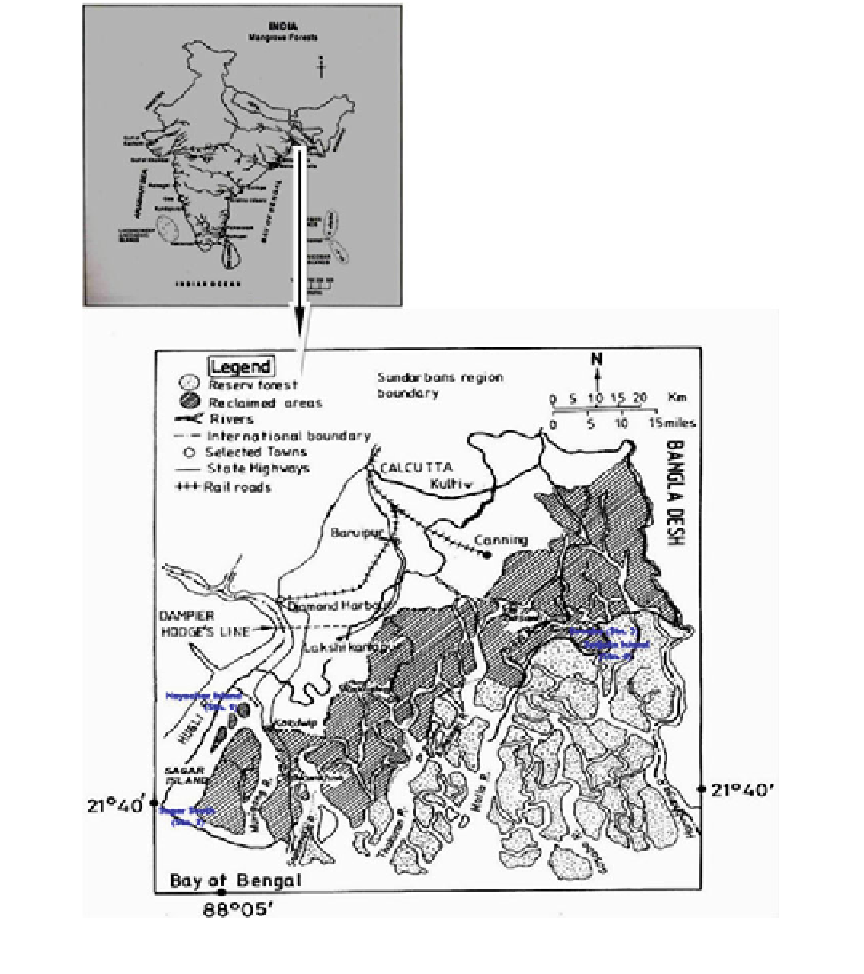Environmental Engineering Reference
In-Depth Information
varying salinity produces changes in the marsh
—
in the kinds of species and also in their number.
Typically, the fewest species are found in the
hypersaline zone and the greatest numbers of
species are found in the freshwater tidal marsh.
In Indian Sundarbans region, salt marsh grass
Porteresia coarctata
intertidal mud
ats of islands located in the high-
saline zone such as Sagar Island (21
fl
°
39
′
04
″
N
and 88
°
01
′
47
″
E), Gosaba (22
°
15
′
45
″
N and
88
°
39
′
46
″
E) and Satjelia Island (22
°
11
′
52
″
N
and 88
E), where the salinity varies
between 15 and 28 psu (Fig.
2.13
). In this
mangrove-dominated ecosystem, the species is
the neighbour of mangroves (Fig.
2.14
) and plays
an important role to maintain stability of the
islands (Mitra and Banerjee
2005
).
°
50
′
43
″
grows in Nayachar Island
(21
E), where the
salinity of water touches almost 2 psu during
monsoon. Also the species is abundant in the
°
45
′
24
″
N and 88
°
15
′
24
″
It
is the
Fig. 2.13
Location of sampling stations (marked in
blue
) in the Indian Sundarbans

